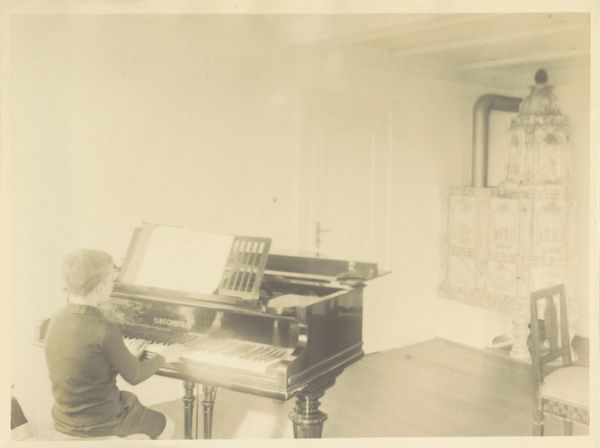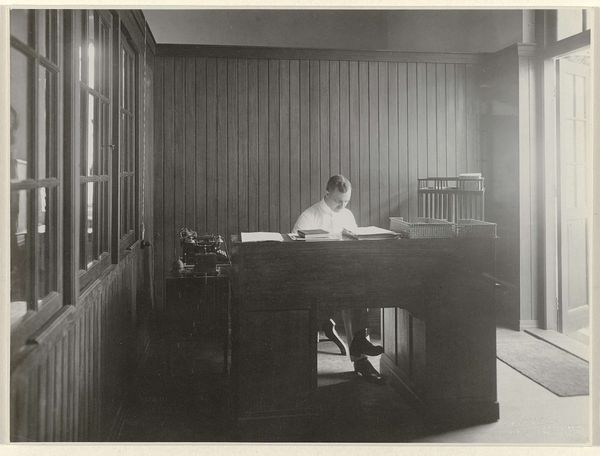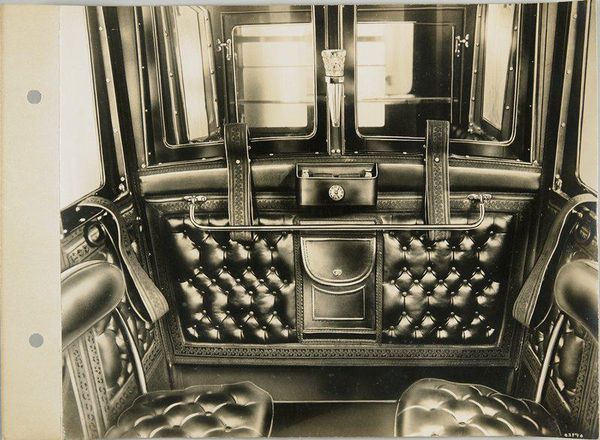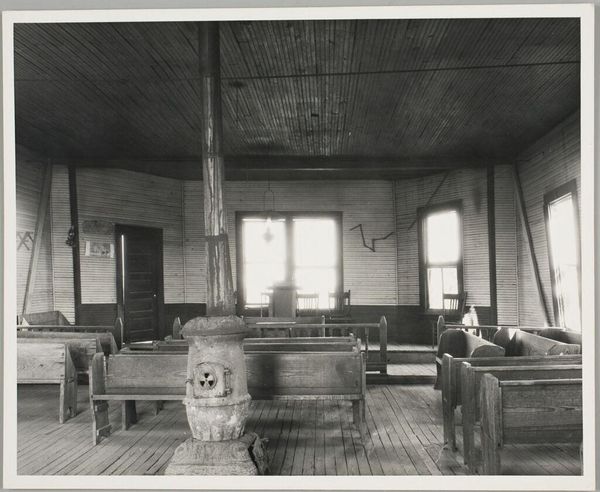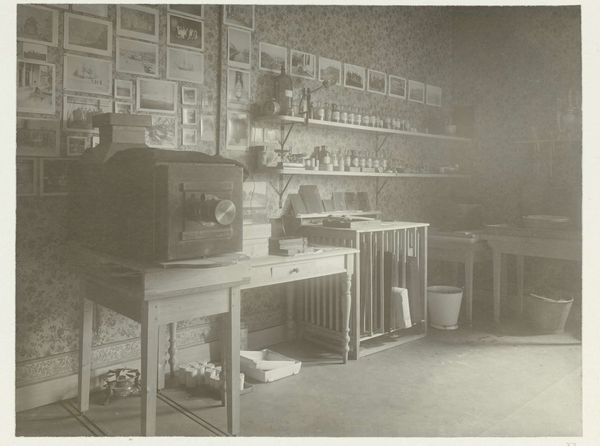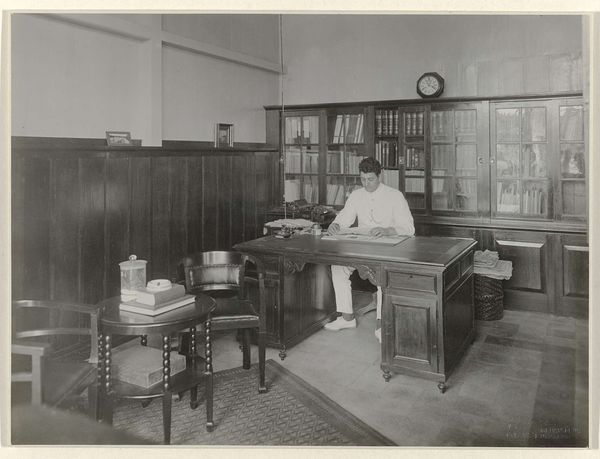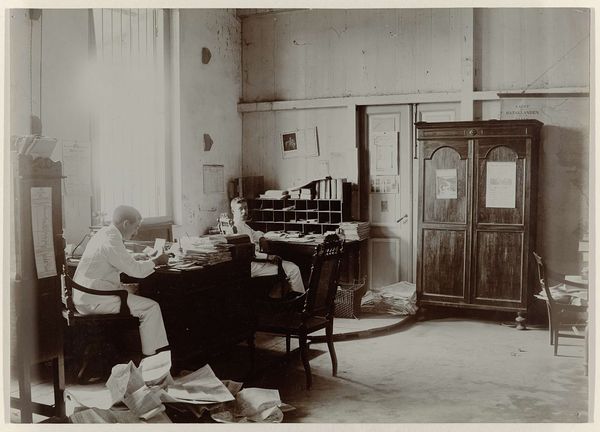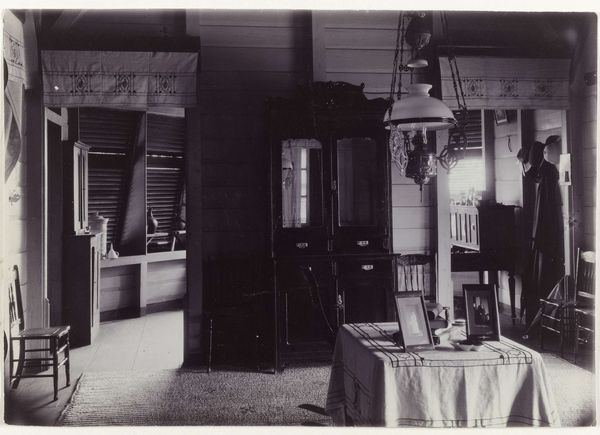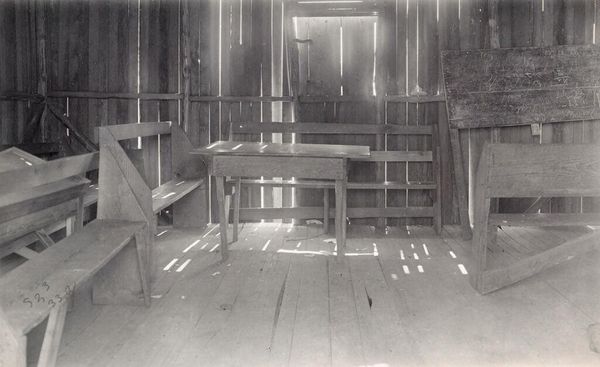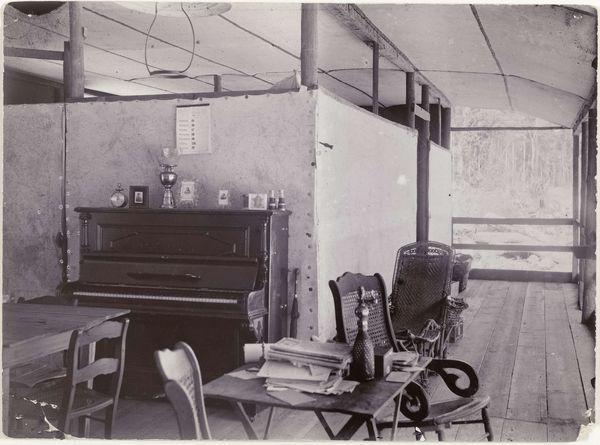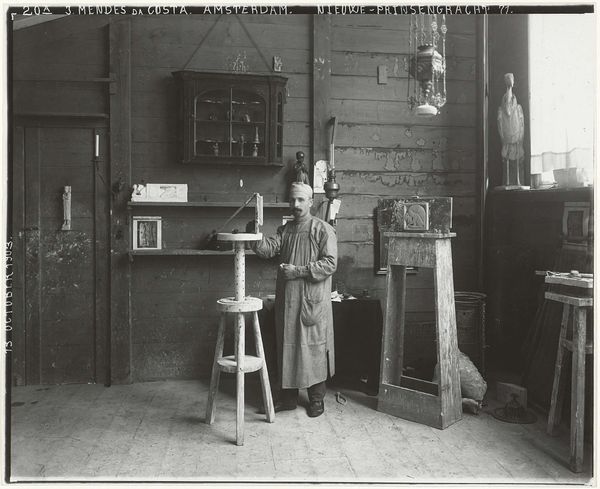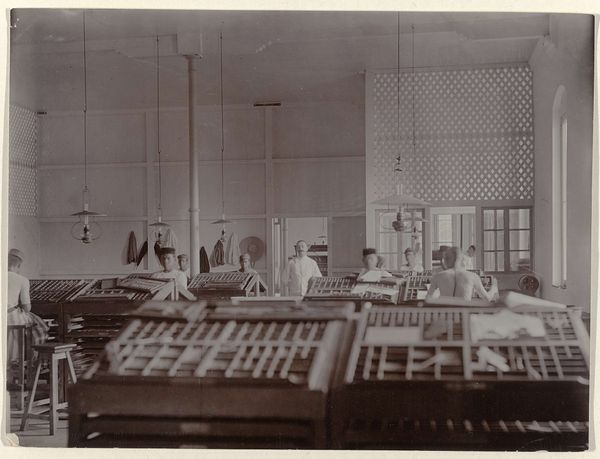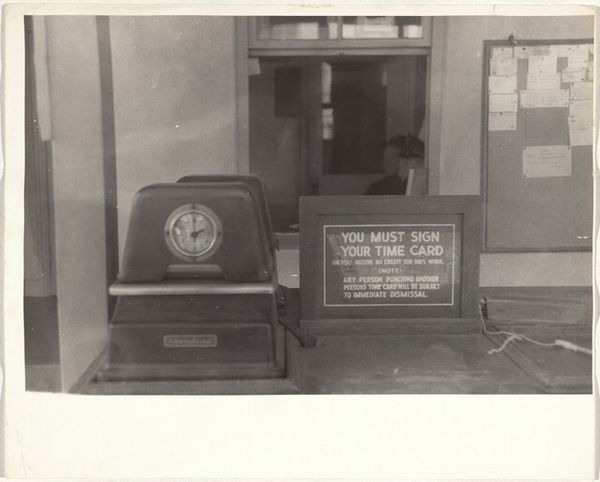
gelatin-silver-print, photography, gelatin-silver-print
#
gelatin-silver-print
#
landscape
#
photography
#
gelatin-silver-print
#
realism
Dimensions: 7 5/8 x 9 9/16 in. (19.37 x 24.29 cm) (image)7 13/16 x 9 15/16 in. (19.84 x 25.24 cm) (sheet)14 1/4 x 18 1/4 x 15/16 in. (36.2 x 46.36 x 2.38 cm) (outer frame)
Copyright: No Copyright - United States
Curator: Walker Evans’ 1936 gelatin silver print, "Church Interior," currently held at the Minneapolis Institute of Art, presents a stark, yet strangely compelling scene. The composition relies heavily on vertical and horizontal lines. Editor: It feels cold, almost clinical. The light from the window is quite flat and it doesn’t do much to soften the rigid lines of the pews and the unforgiving surfaces within this religious interior. I get a distinct sense of austerity. Curator: Indeed. The textures of the wood, the sheen on the organ keys, even the fibers of the small rug—each element speaks to a specific level of craftsmanship. There is an obvious hierarchy of value embedded here; each object possesses different material characteristics that position it in the social ecosystem. Editor: The photograph documents more than a place of worship, doesn’t it? Look at the "Secretary’s Report" hanging on the wall and the empty chair sitting off to the right side—there's clear visual evidence of labor, both spiritual and administrative. Curator: Precisely. It provides a material record of human activity within this confined social space. Even the carefully arranged organ, clearly hand-crafted and meant to perform religious works, becomes a symbol of both devotion and toil. The image prompts questions about class, labor, and faith. Editor: And about survival and making. Someone constructed these pews, someone laid these boards, and someone, more specifically, is dutifully tracking donations and attendance in this ledger to keep the church and this interior afloat. It is as if he elevates the mundane work of holding an institution afloat. Curator: And Evans transforms all that physical making, all that effort into a visual statement that transcends mere documentation and becomes its own stark object of historical record. It is at once haunting, plainspoken, and very, very real. Editor: It is a reminder of the grit, both seen and unseen, that comprises so much of our daily realities. And that perhaps, making things by hand with such devotion can be enough.
Comments
No comments
Be the first to comment and join the conversation on the ultimate creative platform.
